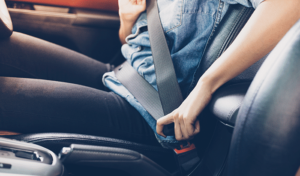
You Need To Know These Important Seat Belt Laws
Seat belt laws might seem inconvenient, but they exist to keep you and your family safe and secure while traveling the roads. When correctly used, safety restraints save over 90

Seat belt laws might seem inconvenient, but they exist to keep you and your family safe and secure while traveling the roads. When correctly used, safety restraints save over 90

Did you know that if you’re in a car accident and found guilty of not wearing a seatbelt, it can affect your injury settlement? Not only is a seat belt

Wearing a seat belt is an absolute necessity when operating or riding in a motor vehicle. This is why there are several seat belt laws in Utah. The Utah Department
UTAH INJURY LAWYERS
Flickinger • Boulton
• Robson • Weeks
PROVO OFFICE
3000 N University Ave
Suite 300
Provo, UT 84604
SOUTH JORDAN OFFICE
10393 S. Temple Dr.
Suite 103
South Jordan, Utah 84095
OFFICE HOURS
Monday- Friday: 8AM-5PM
Saturday-Sunday: Closed
*Disclaimer: the information provided by this website is for informational purposes only and should not be considered legal advice or a substitute for competent legal counsel.
**SMS consent and contact phone numbers will not be shared or sold to third parties or their affiliates for any purpose.
© 2025 All Rights Reserved.